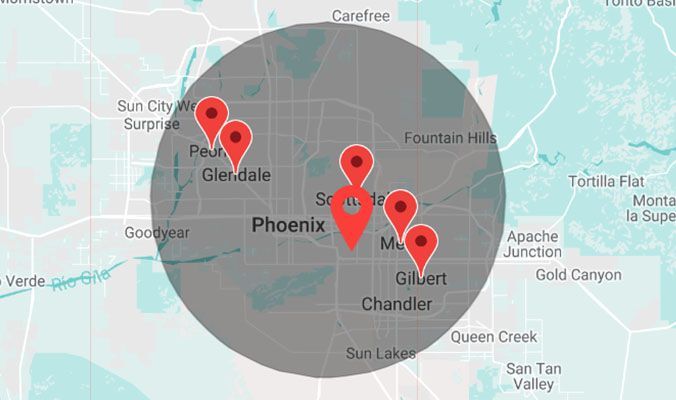When to Say Goodbye: Understanding Quality of Life in Pets
As our beloved furry companions age, a difficult question often arises: when is it time to say goodbye? The thought of letting them go can be heartbreaking, and making end-of-life decisions is never easy. However, ensuring our pet's quality of life remains a top priority throughout their golden years. This means recognizing the signs that their needs might be changing and understanding how those changes can impact their happiness and well-being.
Recognizing the Signs: When Your Senior Pet's Needs Change
As our furry companions enter their senior years, their bodies naturally change. These changes can be subtle initially, but they're important to recognize because they can impact your pet's overall well-being. The good news is that many of these age-related changes can be managed with veterinary care, medication, or adjustments to your pet's daily routine. The key is being aware of the signs and keeping an open line of communication with your veterinarian.
Here are some common signs that your senior pet's needs might be changing:
Decreased Mobility: Stiff joints, arthritis, or weakness in the hind legs can make it difficult for your pet to climb stairs, jump on furniture, or get around the house as easily as they used to. You might notice them hesitating on stairs, taking shorter walks, or avoiding activities they once enjoyed.
Changes in Appetite and Energy Levels: Senior pets may naturally eat less or become less interested in food. This could be due to a decreased sense of smell or taste, dental problems, or underlying medical conditions. Similarly, their energy levels might decline, and they might sleep more throughout the day.
Changes in Elimination Habits: Accidents in the house can be frustrating for pet owners, but they can also be a sign of an underlying medical issue in senior pets. Increased urination, difficulty holding their bladder, or constipation can all be caused by age-related changes or health problems.
Behavioral Changes: Increased anxiety, whining, or pacing can sometimes indicate pain or discomfort in senior pets. They might also become more withdrawn, lose interest in playtime, or exhibit changes in sleep patterns. These behavioral changes can be a way for your pet to communicate that something isn't right.
It's important to remember that these changes don't necessarily mean it's time to say goodbye. However, they are a signal that a visit to your veterinarian is warranted. A thorough examination can help identify any underlying medical conditions and determine the best course of treatment to improve your pet's quality of life
Beyond Physical Signs: Considering Emotional and Behavioral Changes
Physical changes aren't the only indicators of your senior pet's well-being. Just like us, pets experience emotions and can show signs of discomfort or pain through behavioral shifts. While some changes might seem like personality quirks, they could be a cry for help. Here are some emotional and behavioral signs to watch for in senior pets:
Increased Anxiety or Vocalizations: Whining, pacing, or excessive barking/meowing can be signs of anxiety or fear. This could be caused by pain, discomfort, confusion due to age-related cognitive decline, or even a change in their environment.
Changes in Sleep Patterns: Senior pets might sleep more than usual, but unusual restlessness or difficulty settling down at night can also be a concern. This could be due to pain, anxiety, or even underlying medical conditions like arthritis.
Loss of Interest in Playtime or Activities: Does your furry friend seem less interested in walks, playtime, or their favorite toys? This could be a sign of pain, fatigue, depression, or even boredom. Senior pets still need mental stimulation and physical activity, so a decline in interest can be a red flag.
Remember, various factors, not just age can cause these behavioral changes. If you notice any of these signs, scheduling a visit with your veterinarian is important. A comprehensive physical exam and any necessary diagnostic tests can help identify the underlying cause and determine the best course of treatment to improve your pet's quality of life.
Open Communication is Key: Partnering with Your Veterinarian for End-of-Life Care
Making end-of-life decisions for our beloved pets is never easy. However, open and honest communication with your veterinarian is crucial during this sensitive time. They are your partner in ensuring your senior pet receives the best possible care and enjoys a good quality of life for as long as possible.
Here's how your veterinarian can help you navigate these difficult decisions:
Comprehensive Examinations and Diagnosis: Your veterinarian can perform a thorough physical exam, discuss your pet's medical history, and recommend any necessary diagnostic tests. This can help identify any underlying medical conditions that might be contributing to their declining quality of life.
Treatment Options and Pain Management: Based on the diagnosis, your veterinarian can discuss treatment options and pain management strategies to improve your pet's comfort and well-being. This could include medications, physical therapy, adjustments to their diet or environment, or even referral to a specialist if needed.
Hospice Care Considerations: If your pet has an incurable condition and their quality of life is significantly compromised, your veterinarian can discuss hospice care options. Hospice care focuses on providing comfort and pain management to allow your pet to live out their remaining days peacefully and with dignity.
Euthanasia as a Compassionate Option: Euthanasia can be a difficult but compassionate decision when a pet's suffering cannot be alleviated and their quality of life is severely diminished. Your veterinarian can discuss the process, answer your questions, and provide support during this emotional time.
Remember, there's no single "right" answer regarding end-of-life decisions. The best action will depend on your pet's circumstances and your family's wishes. Your veterinarian is there to guide you through the process, provide information and resources, and ultimately help you make the most loving and compassionate decision for your furry companion.
Guiding Your Senior Pet Through Their Golden Years: A Commitment to Comfort and Care at Pet Home Euthanasia
As your pet ages, their needs will inevitably change. While some changes are a natural part of the aging process, others might signal a decline in their quality of life. Here at Pet Home Euthanasia, serving Phoenix, Peoria, Mesa, Chandler, and surrounding areas, we understand the importance of recognizing these signs and working with your veterinarian to create a care plan that prioritizes your pet's comfort.
Remember, open communication with your veterinarian is key. They can be your partner in navigating these decisions and ensuring your senior pet receives the love and support they deserve. Don't hesitate to schedule a hospice examination appointment with Pet Home Euthanasia today.
By accepting you will be accessing a service provided by a third-party external to https://pethomeeuthanasia.com/



